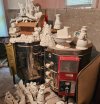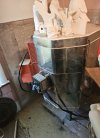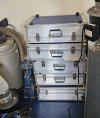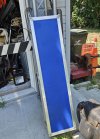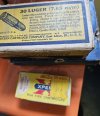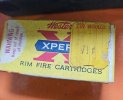- Joined
- Aug 20, 2019
- Messages
- 66
so I might have an opportunity to pick up a amaco type 64 kiln for dirt cheap
I can't really find any manuals on it, and quite honestly i might just buy it and junk it because the tools/accessories/cart it's on are useful to me.
(school auction they are unloading this). So most likely I'll get this regardless, depends how it works out. But I am curious if anyone uses an electric kiln like this,
I can't find a manual for it yet, the temp gauge on it goes to 2500 F whether it can hit that or not, i have no idea. it certainly could be used for tempering.
I can't really find any manuals on it, and quite honestly i might just buy it and junk it because the tools/accessories/cart it's on are useful to me.
(school auction they are unloading this). So most likely I'll get this regardless, depends how it works out. But I am curious if anyone uses an electric kiln like this,
I can't find a manual for it yet, the temp gauge on it goes to 2500 F whether it can hit that or not, i have no idea. it certainly could be used for tempering.

